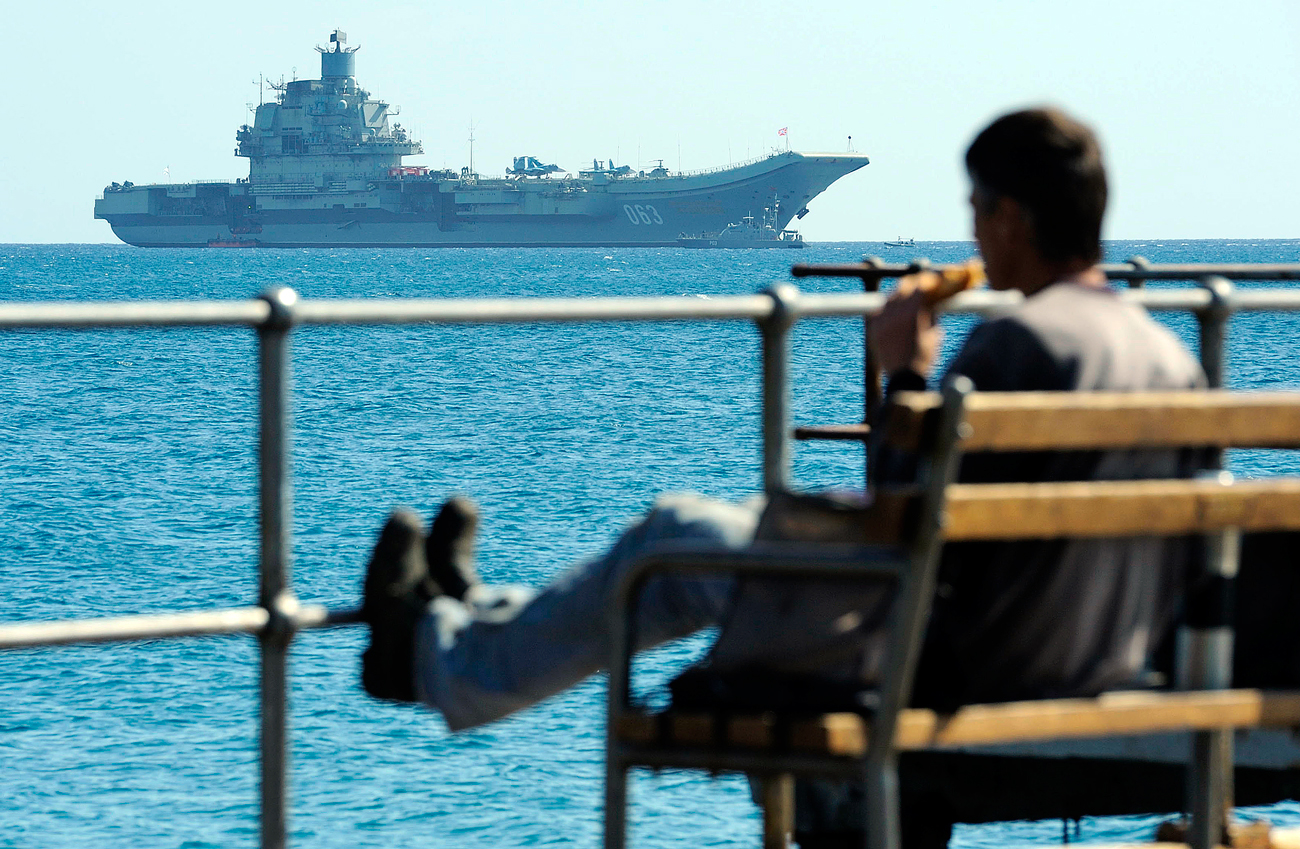
A man enjoy the sea and the sun as in the background the Russian aircraft carrier Admiral Kuznetsov lies at anchor off Cyprus’ largest port of Limassol.
APA permanent Russian naval base will be set up in the Syrian city of Tartus, Russian Deputy Defense Minister Nikolai Pankov announced on Oct. 10.
The Defense Ministry has already prepared the relevant documents and will soon submit them to parliament for ratification, he said.
In fact, Russia has had a naval facility in Tartus since the mid-1980s. The base miraculously managed to survive after the breakup of the Soviet Union.
“At the time, defense ministers were busy winding down the Russian presence abroad. Over the past 25 years, we have lost bases in Qatar and Yemen, whereas Tartus has miraculously survived,” retired colonel-general Leonid Ivashov, head of the International Center of Geopolitical Analysis, a Moscow-based think tank, told RBTH.
He added that at the moment, the Russian naval facility in Syria consists of a floating workshop, which can provide only basic maintenance and repairs to ships.
“It houses very basic facilities for ships passing through the Mediterranean. In Tartus, crews can replenish their food and ammunition supplies as well as carry out basic repairs of their ships,” he said.
According to an RBTH source in the defense industry complex, now the base will have piers for ships’ permanent deployment, as well as barracks for housing service personnel and air defense troops and security units.
At the same time, the number of troops who will be defending the base in Tartus remains unclear. Everything will depend on the tasks set by the Russian command.
“The first purpose of the future base that comes to mind is the deployment in the Mediterranean of the Admiral Kuznetsov aircraft carrier with Su-33 and MiG-29K/KUB fighter jets as well as Ka-52K attack helicopters,” said Dmitry Litovkin, a military observer for the Izvestiya daily newspaper.
Without a base like this, deploying a full-fledged naval detachment in the Mediterranean could take weeks, he added.
“However, now ships with Kalibr-NK cruise missiles can be permanently based on the Syrian shores. And the deployment of a naval detachment at sea will take several hours rather than weeks,” said Litovkin.
After the breakdown of Russian-U.S. cooperation on Syria, Russia has dispatched Su-24 and Su-34 tactical bombers to the region, with Su-25 strike aircraft being prepared for redeployment too.
Last week, the Russian Defense Ministry additionally deployed an S-300V4 Antey-2500 missile system (SA-23 Gladiator in NATO classification) closer to the theater of operations.
This tracked version of the S-300 air defense missile system is intended to provide cover to service personnel in combat positions. It is capable of destroying enemy ballistic missiles approaching targets at a speed of up to 2.5 kilometers (1.5 miles) per second from a distance of up to 150 km (93 miles).
All rights reserved by Rossiyskaya Gazeta.
Subscribe
to our newsletter!
Get the week's best stories straight to your inbox